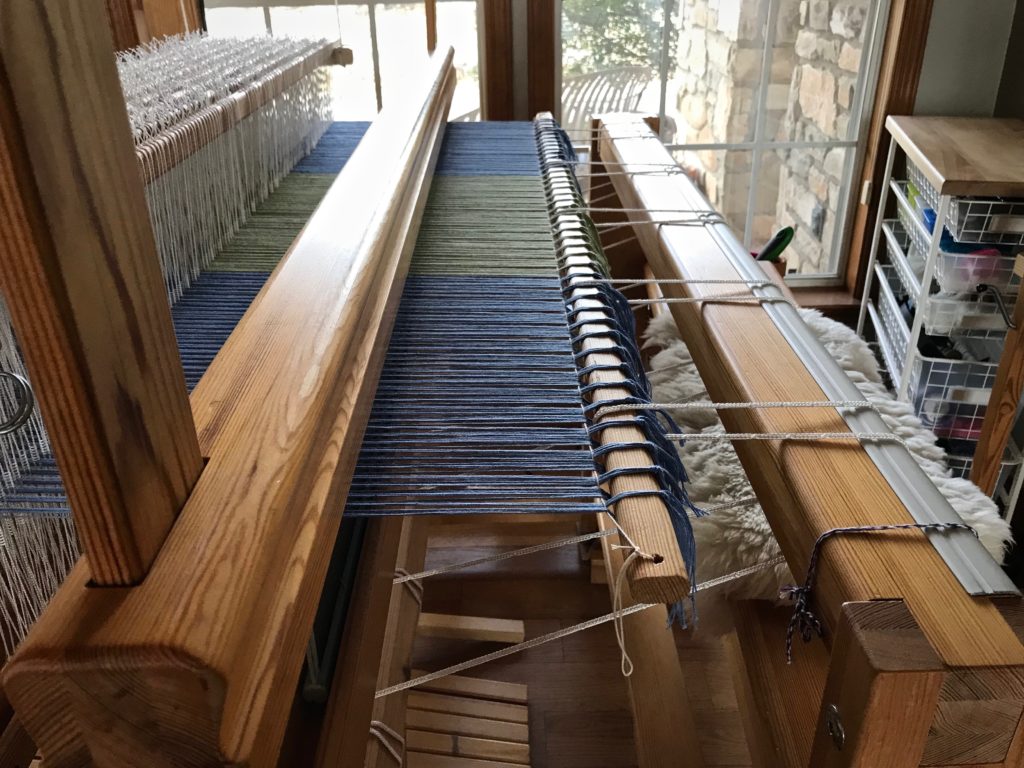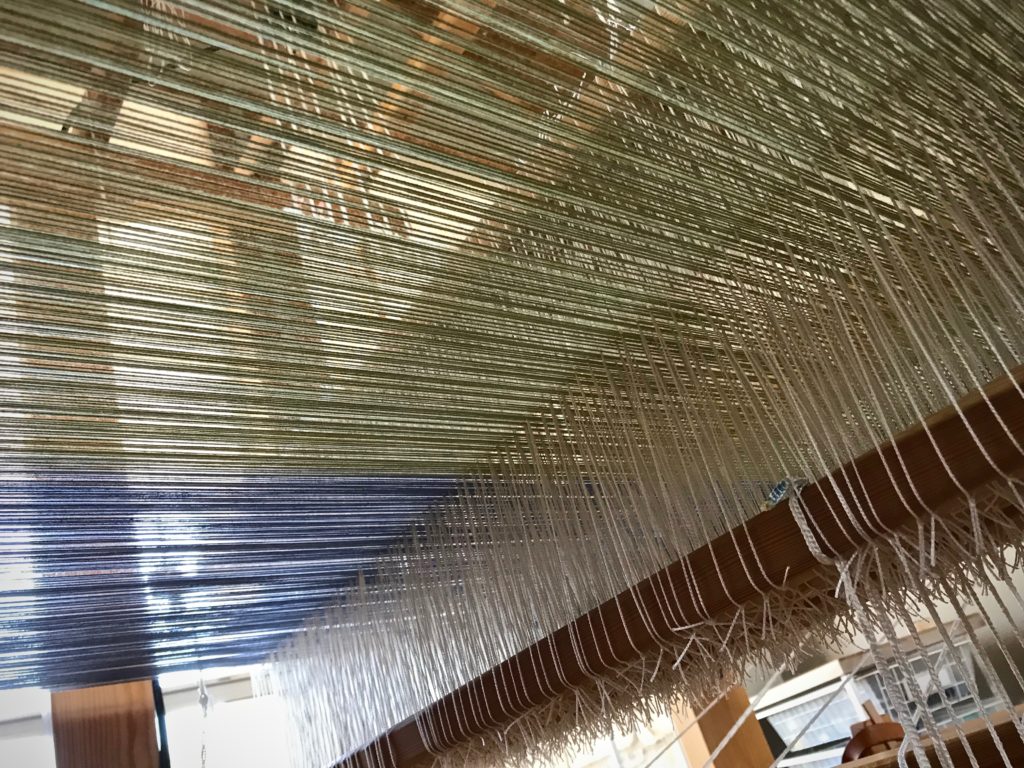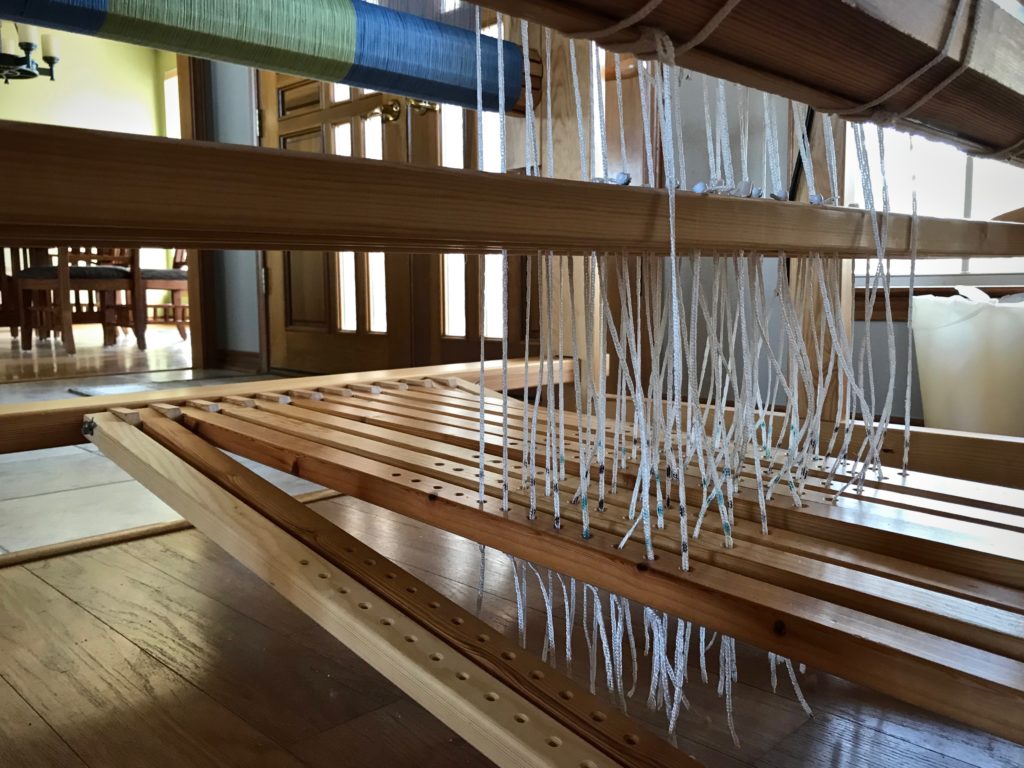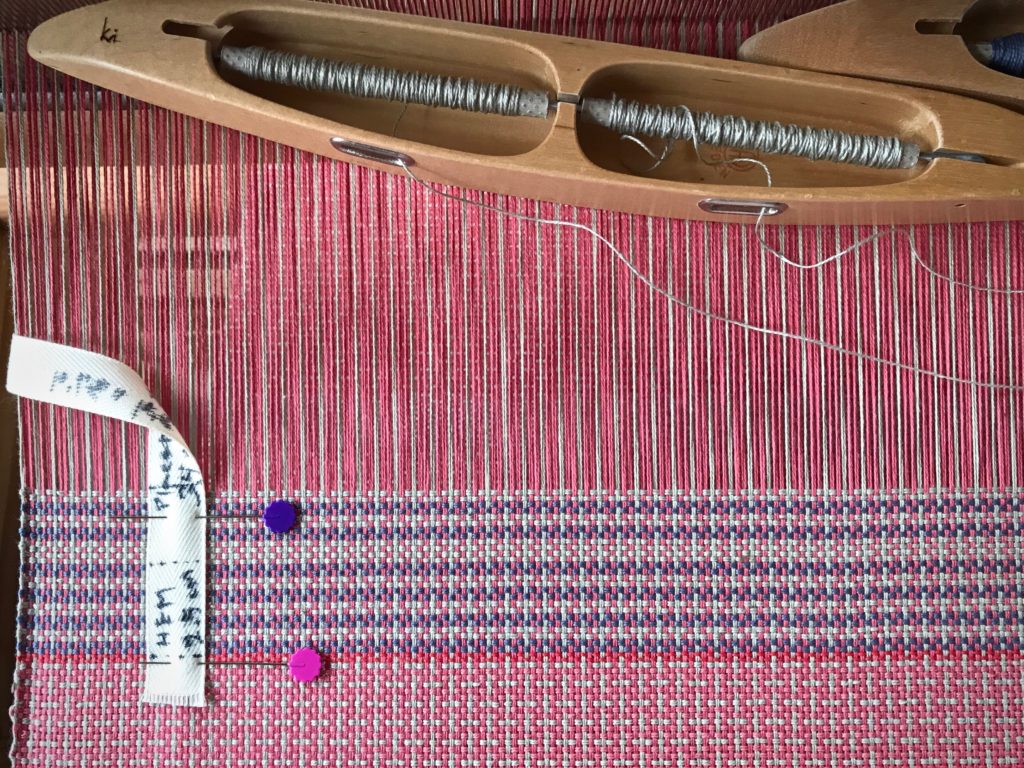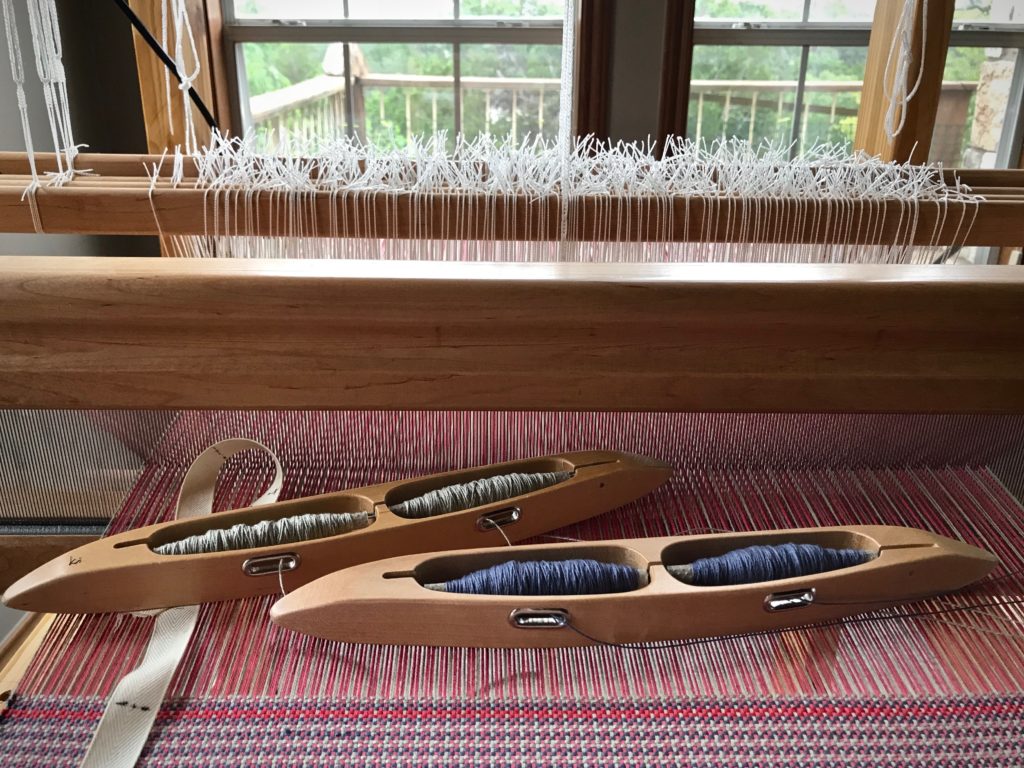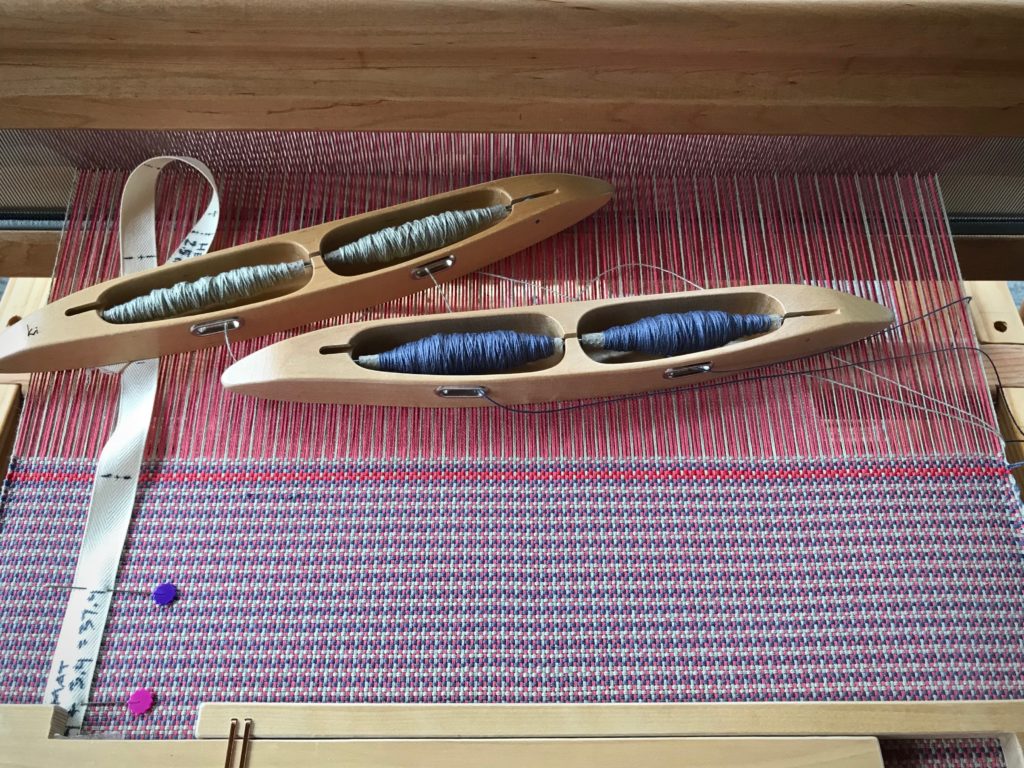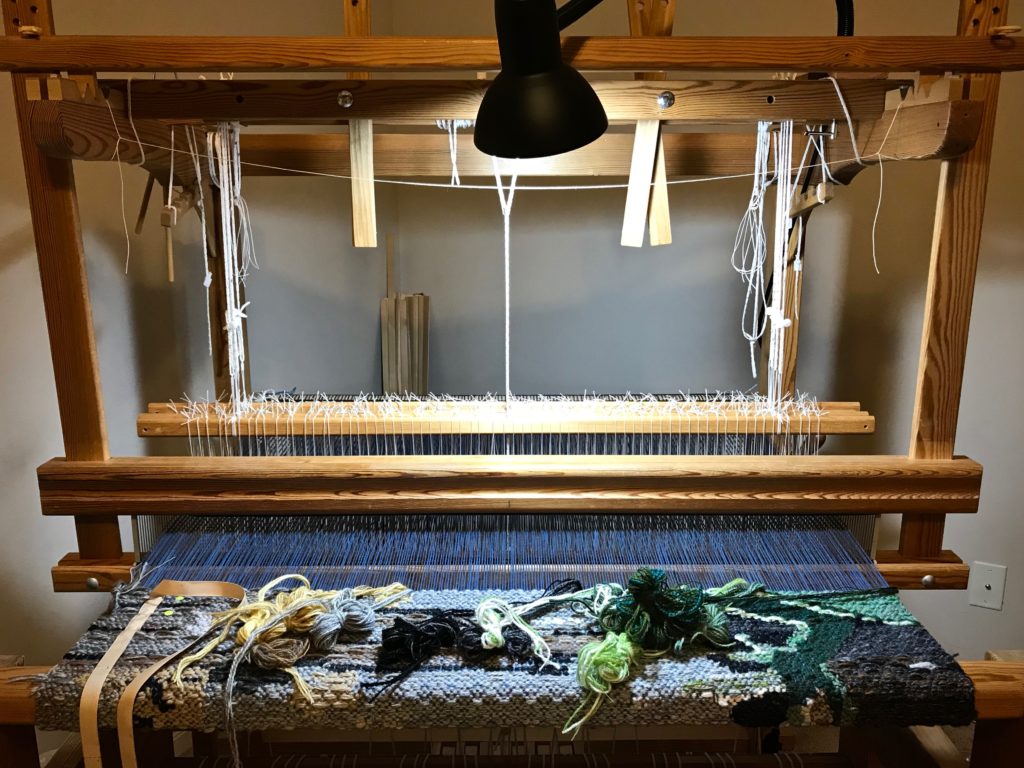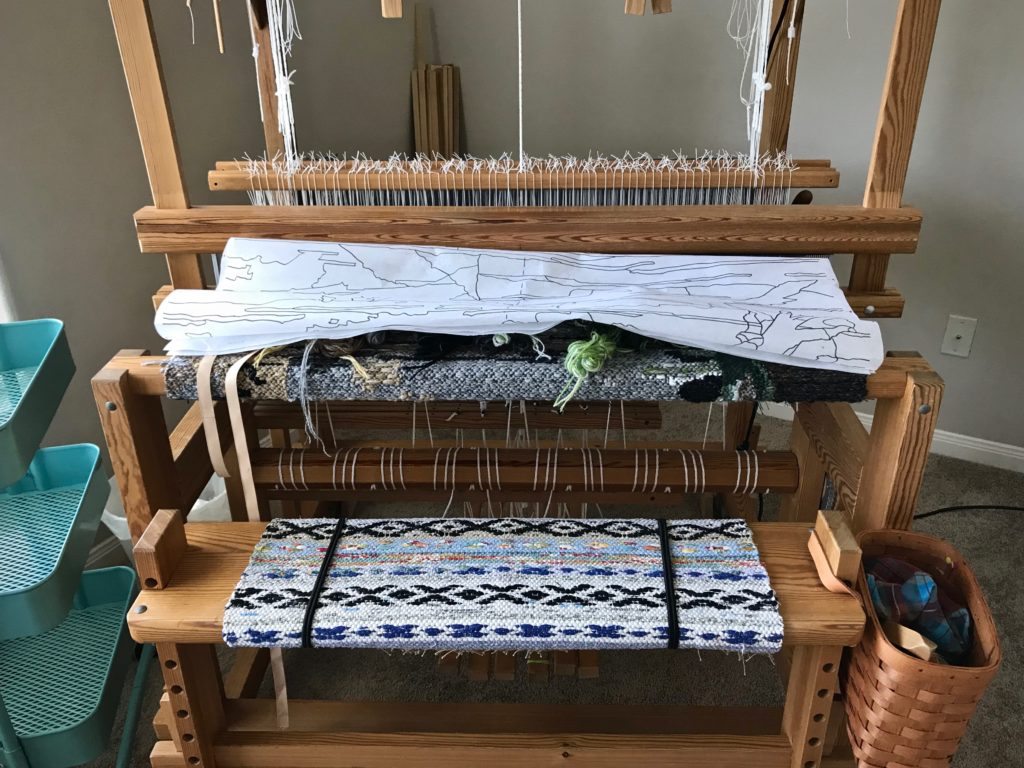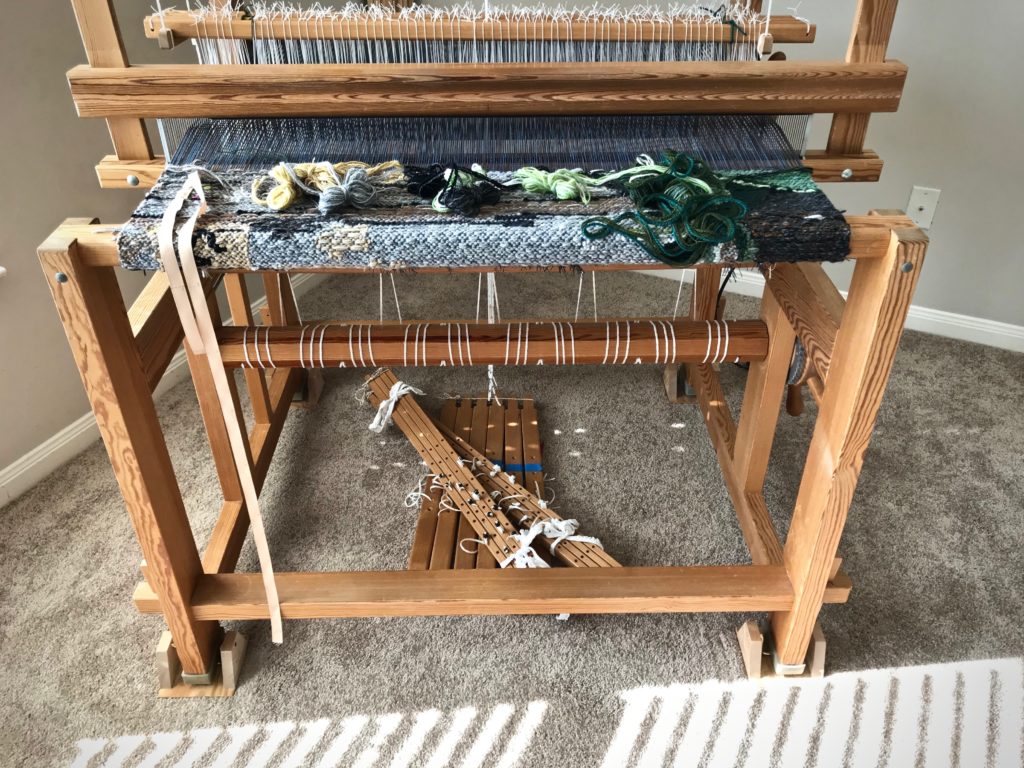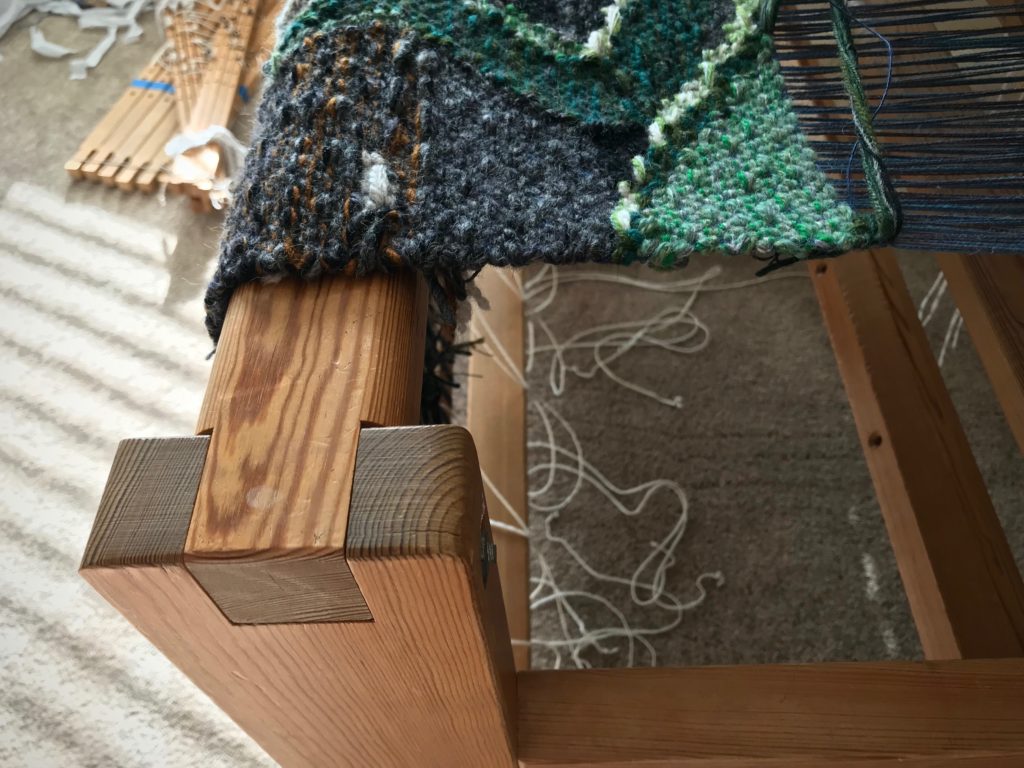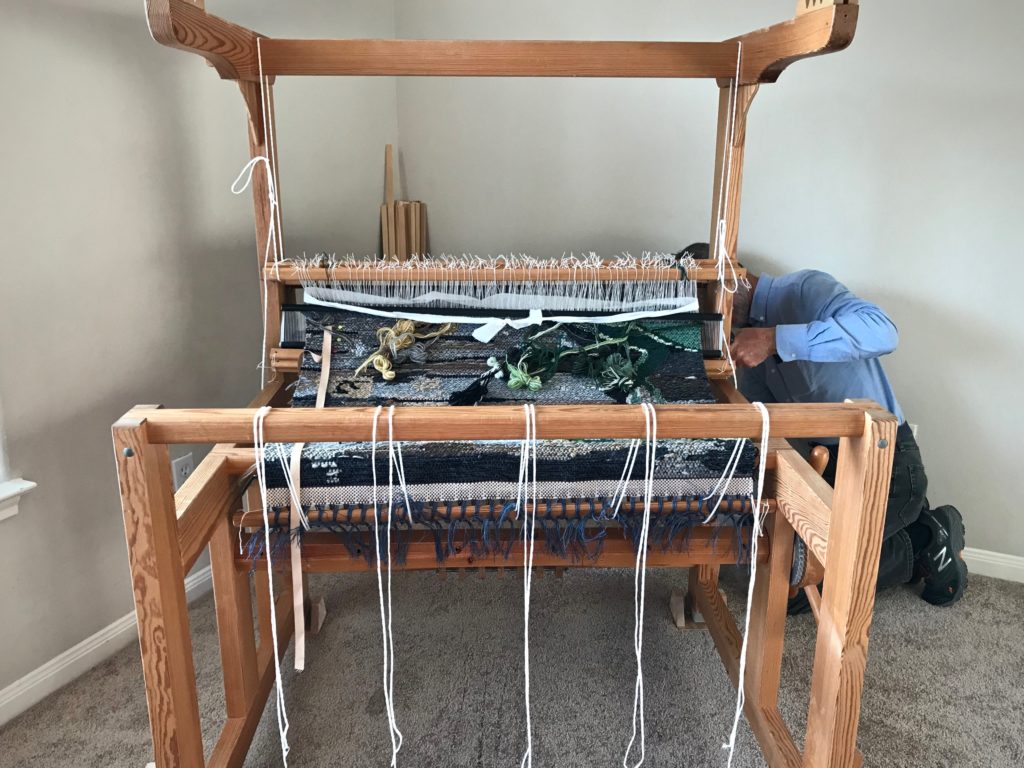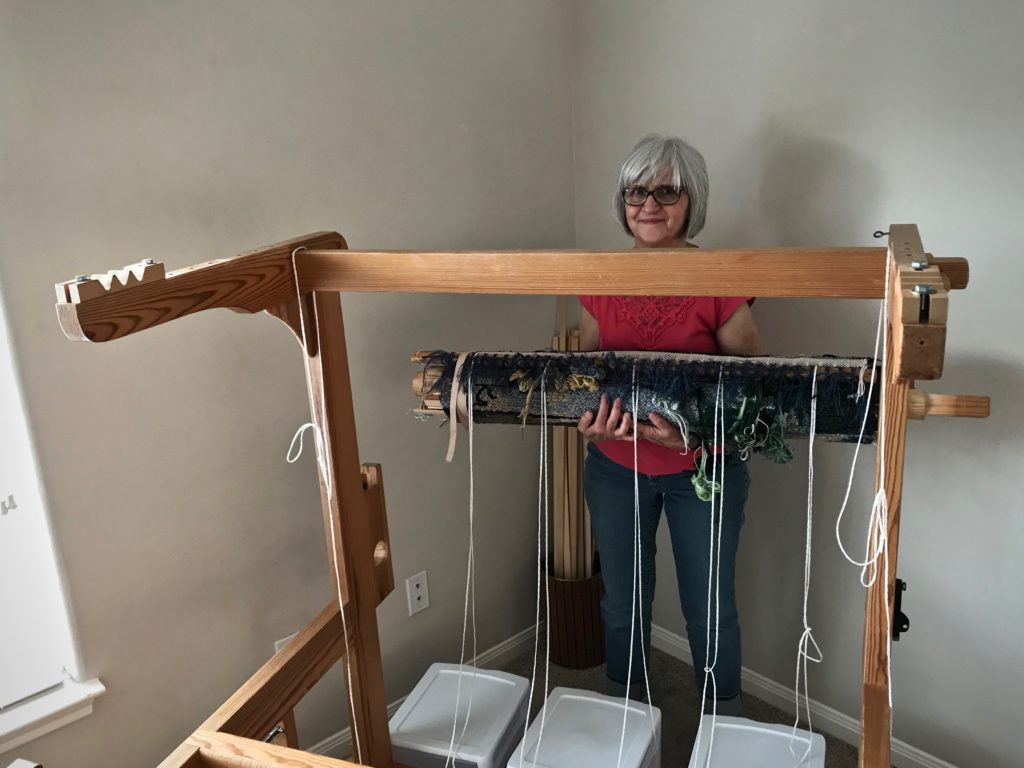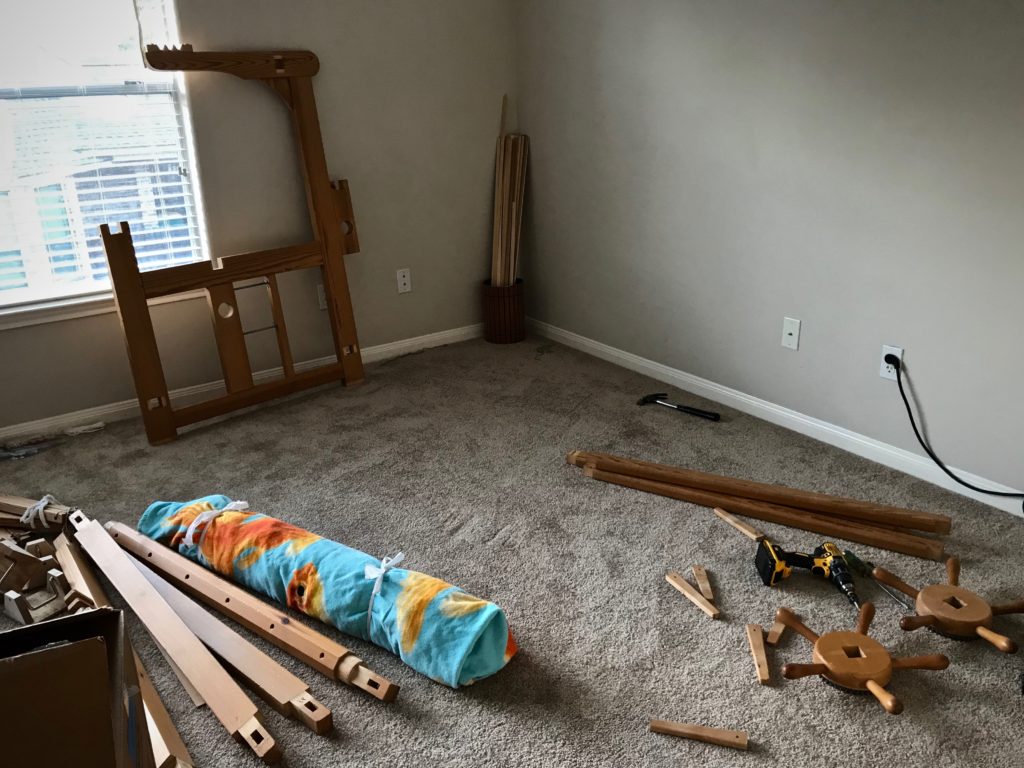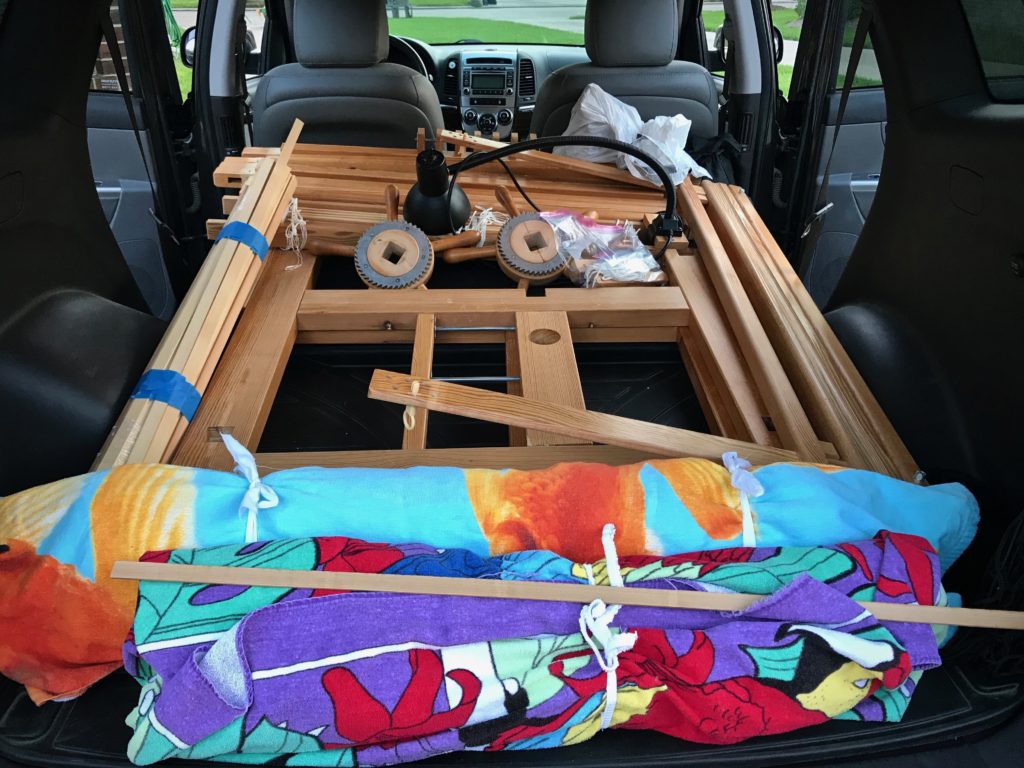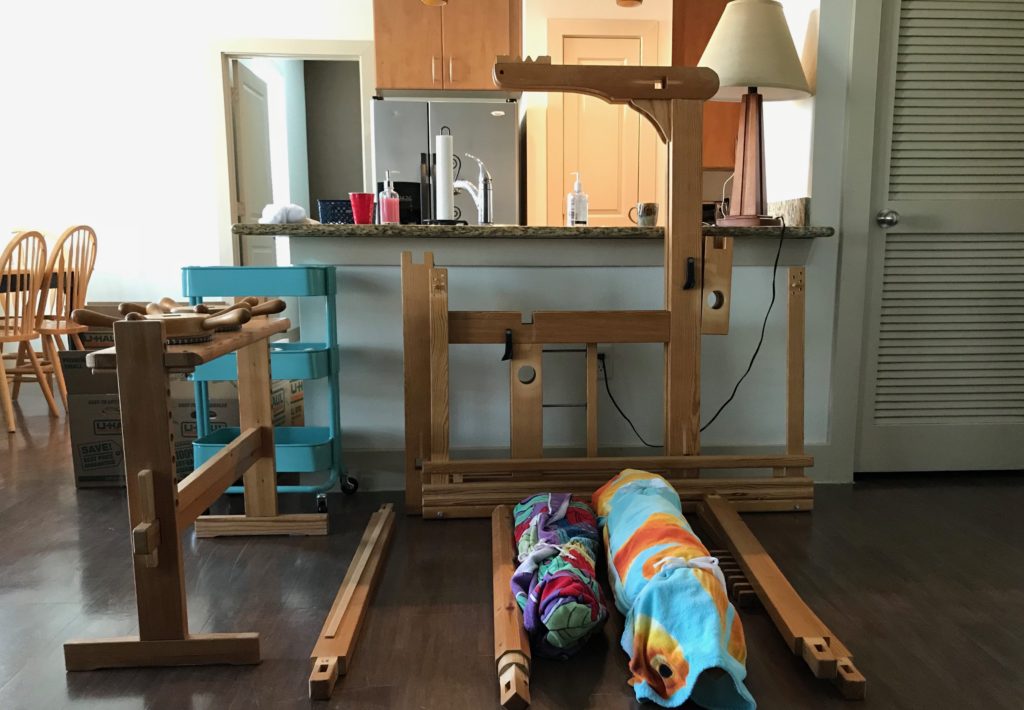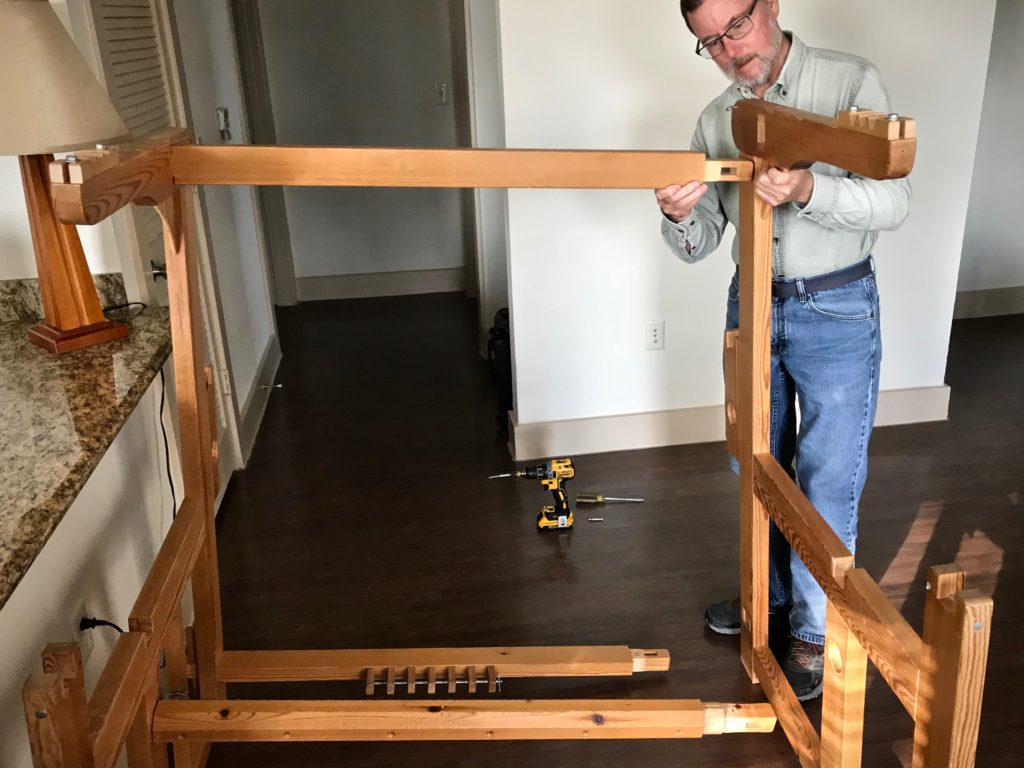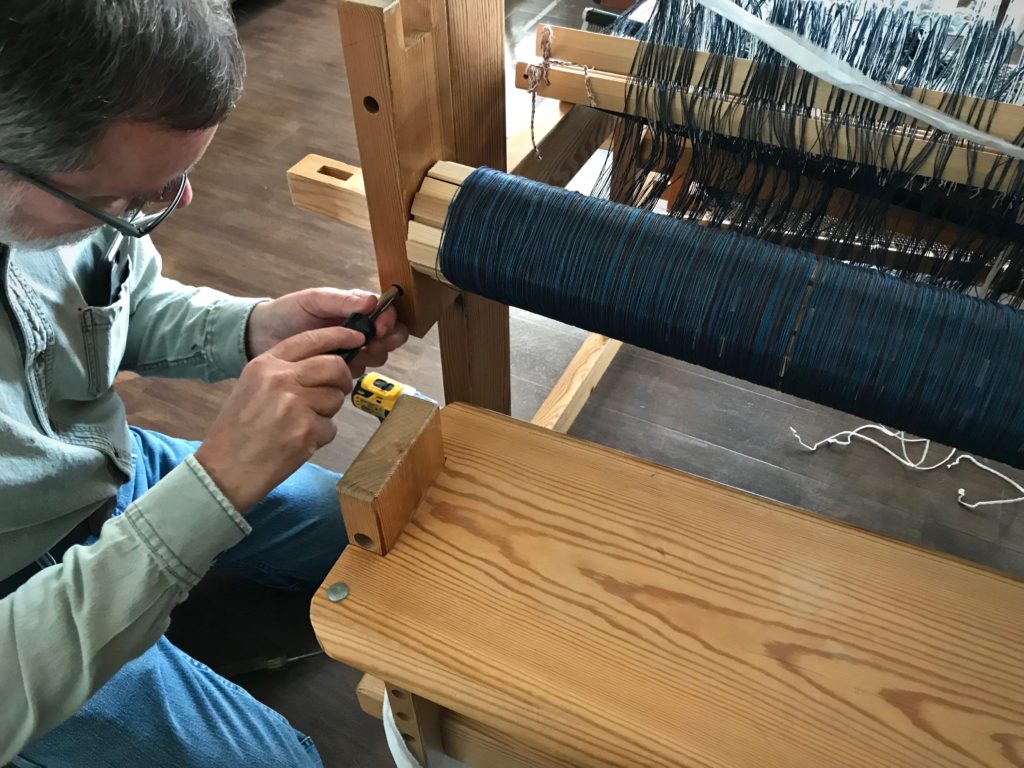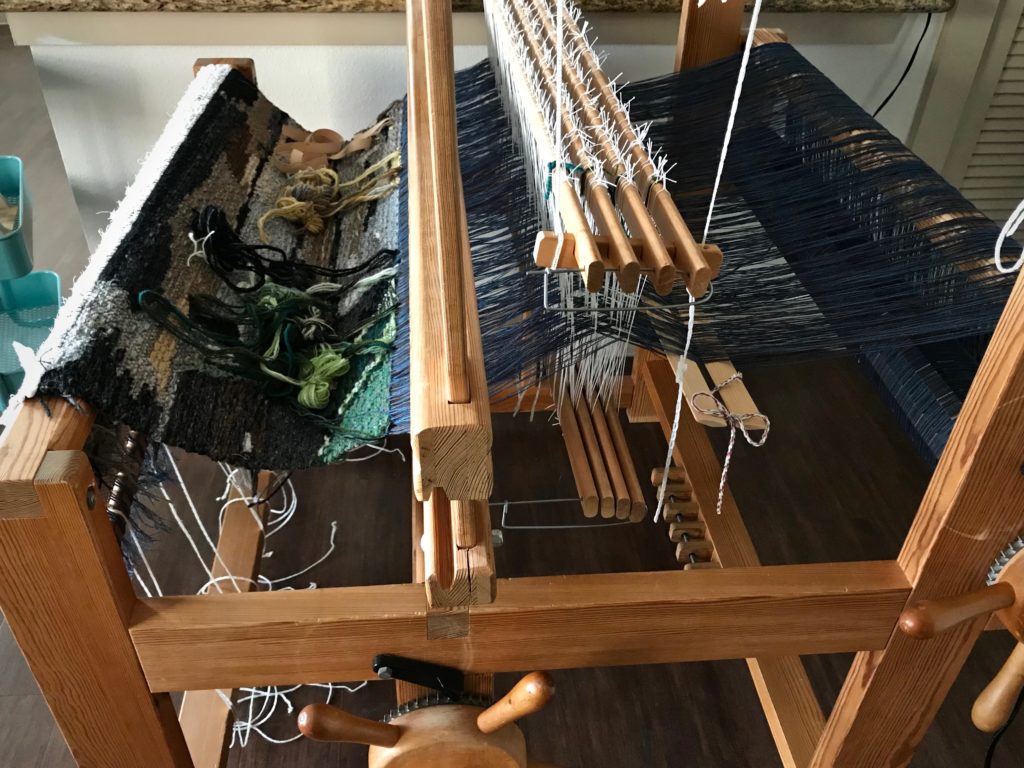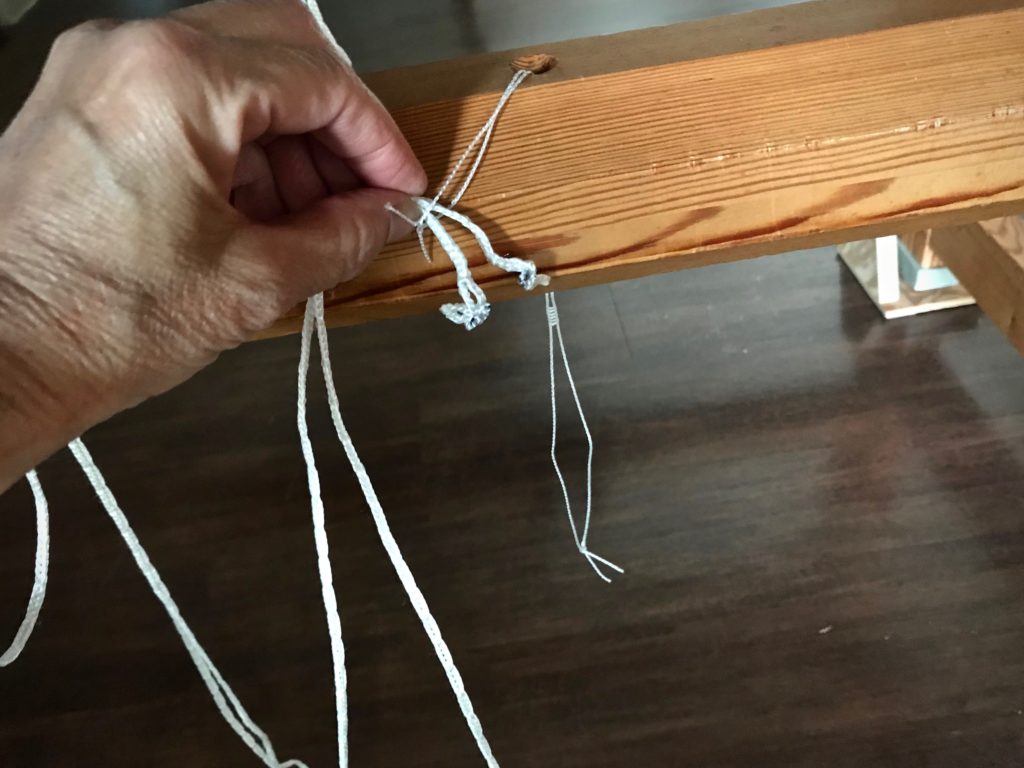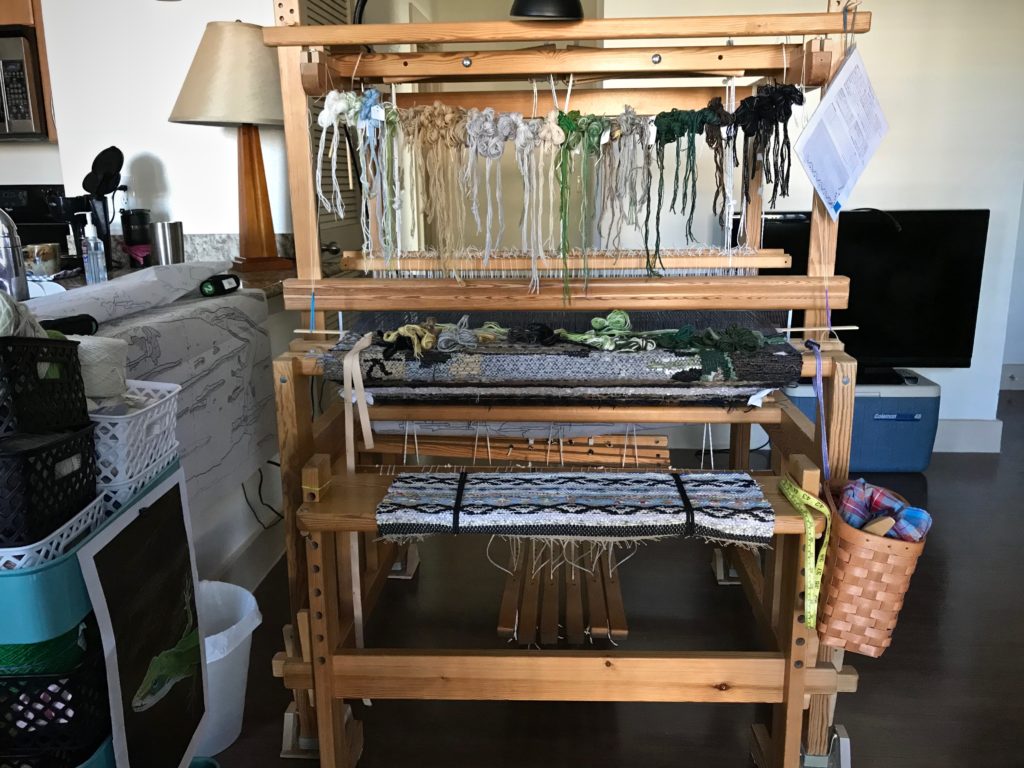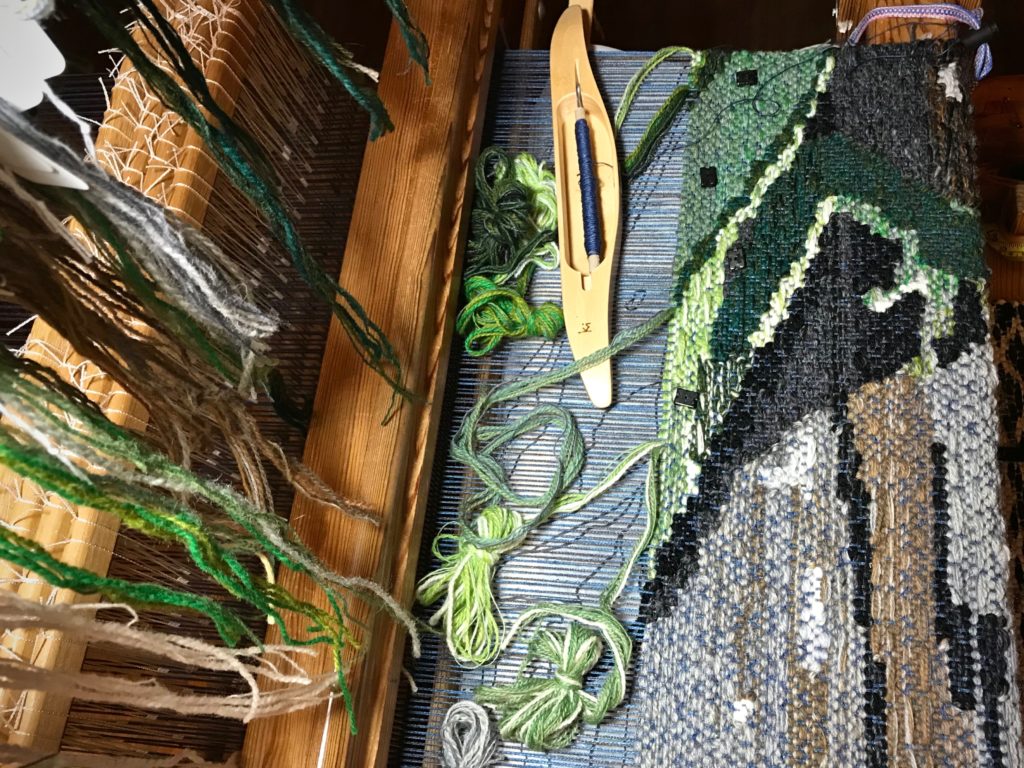Dressing the drawloom the second time is easier than the first time. No slip ups or confusion. Just smoothly moving from one step to the next. (Read to the end to see what to expect for July.)
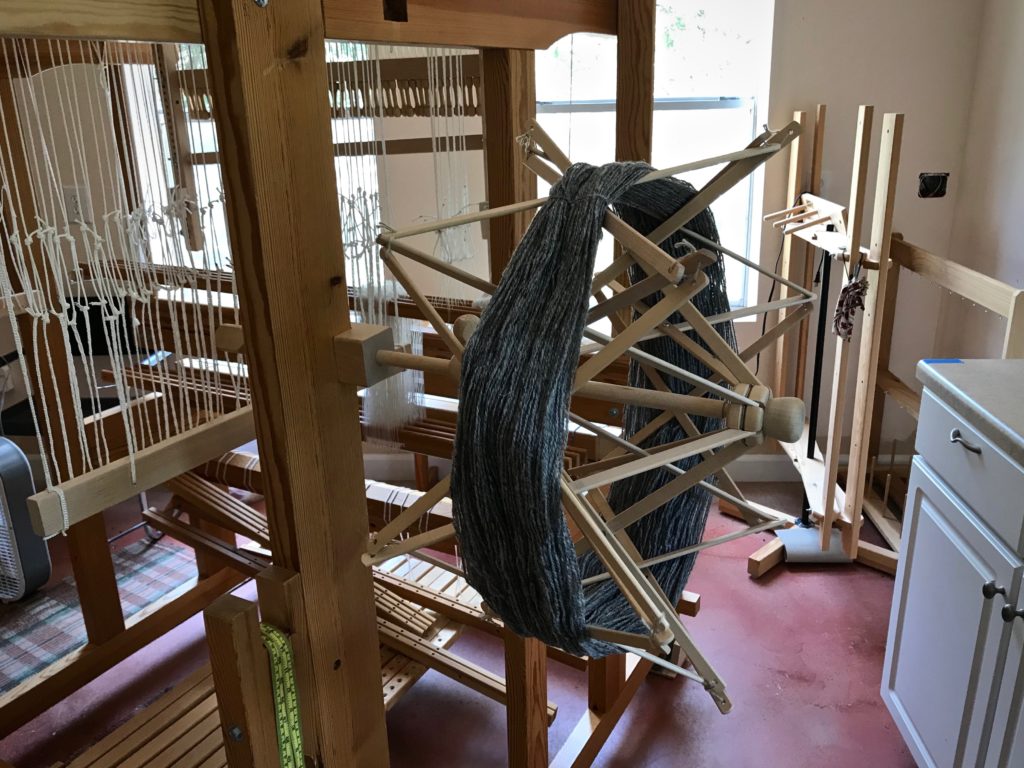
With my first drawloom warp the most challenging part was distributing the pattern shafts. (See Q and A with Joanne Hall and Drawloom Dressing.) This time something clicked and the light bulb turned on. Instead of blindly following steps, I now understand what I am doing, and why. And I am having fun in the process!
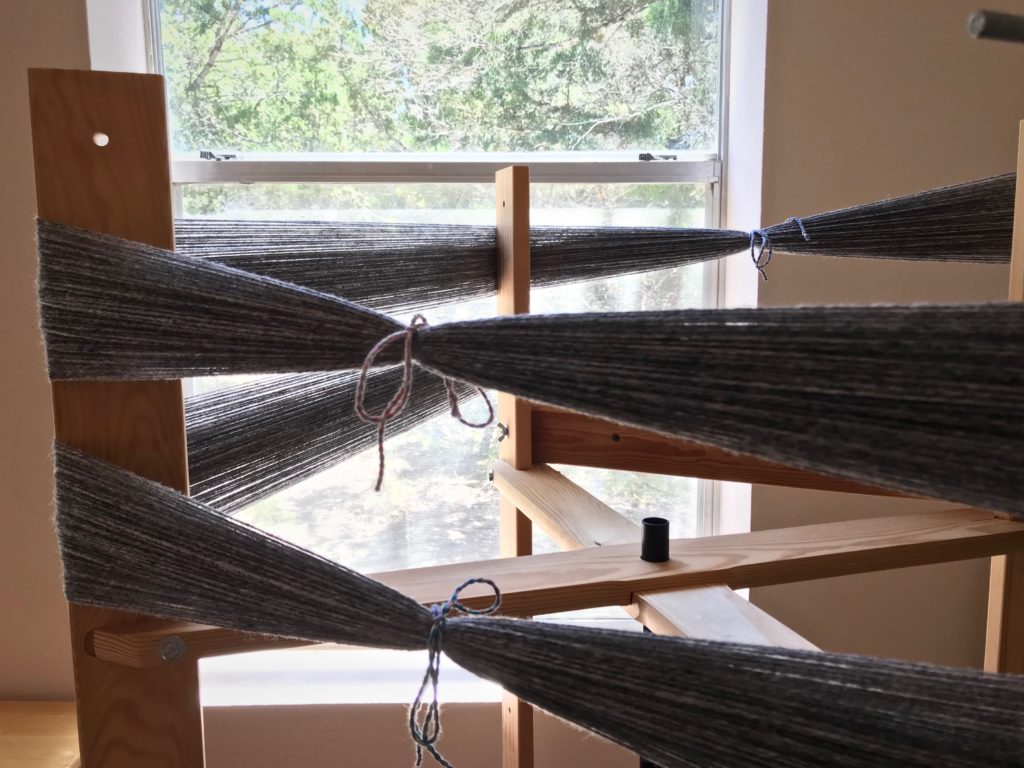
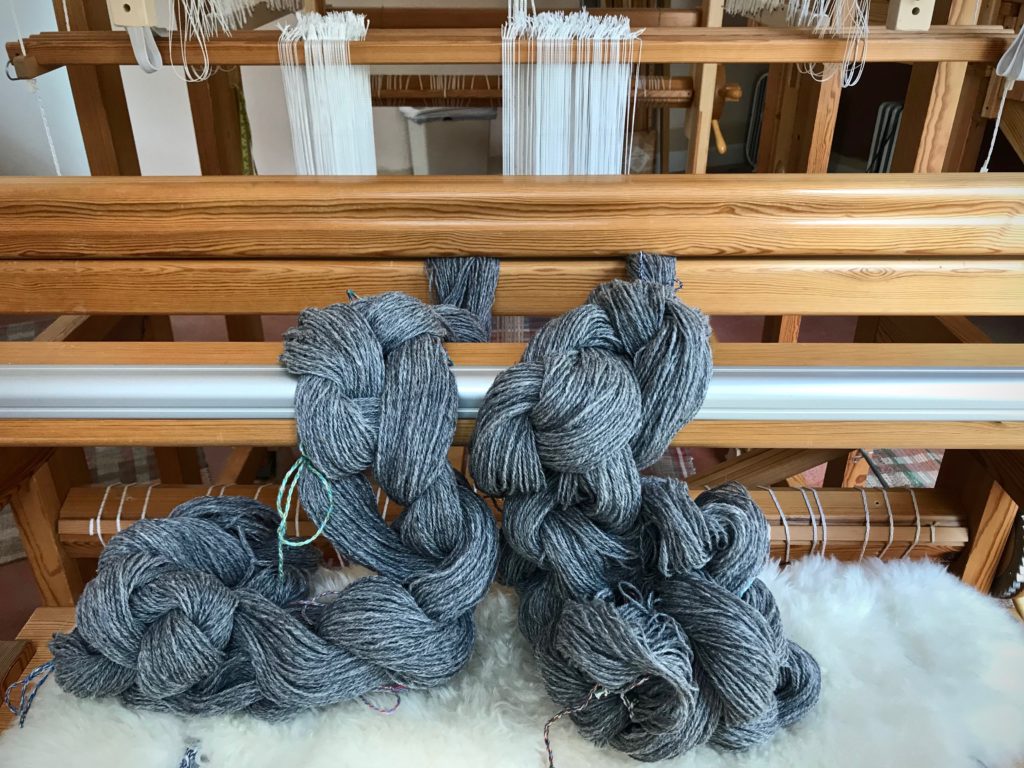





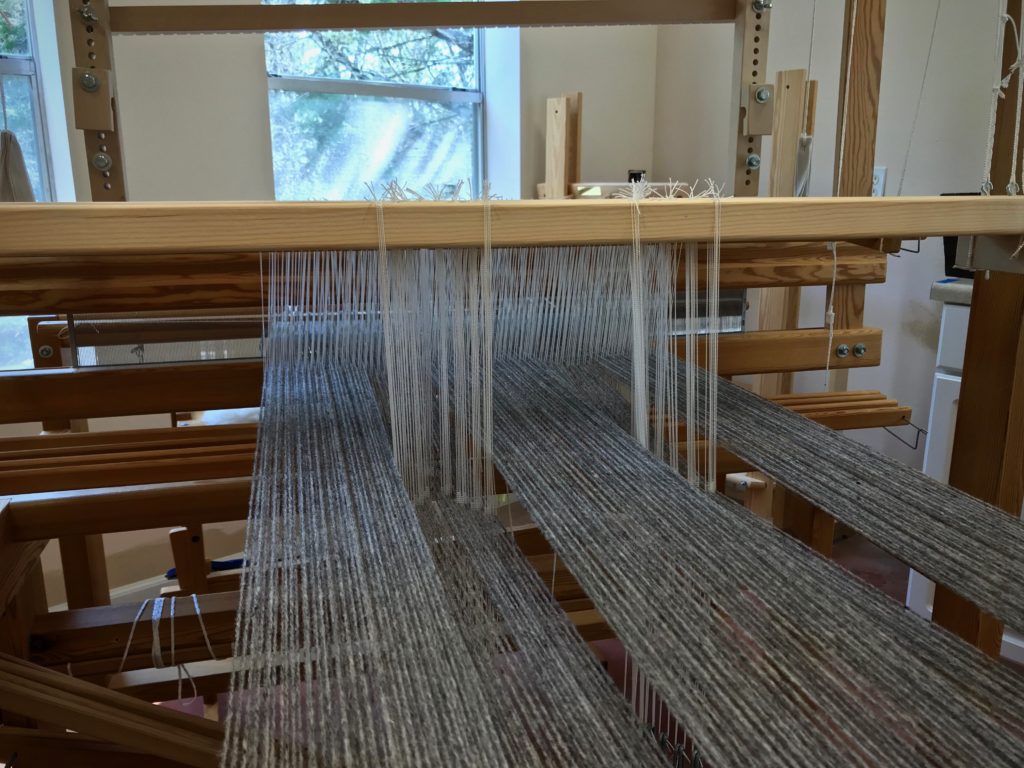



Friends, It’s that time again, when Warped for Good is put on pause for the month of July.
Thank you for sharing in this journey with me!
What’s on my looms: I am near the end of the blue double weave blanket on the Standard, and I am planning a new pictorial tapestry for that loom. The drawloom is dressed and in motion. And the Ideal loom is still sitting ready for rosepath rag rugs. Also, Steve and I have a Casita trip planned that will include some leisurely backstrap band weaving.
What’s on your loom right now? Share with us in the comments.
See you the first Tuesday of August! (In the meantime catch me over on Instagram @celloweaver.)
May your second times be better than your first times.
Keep on Weaving,
Karen

